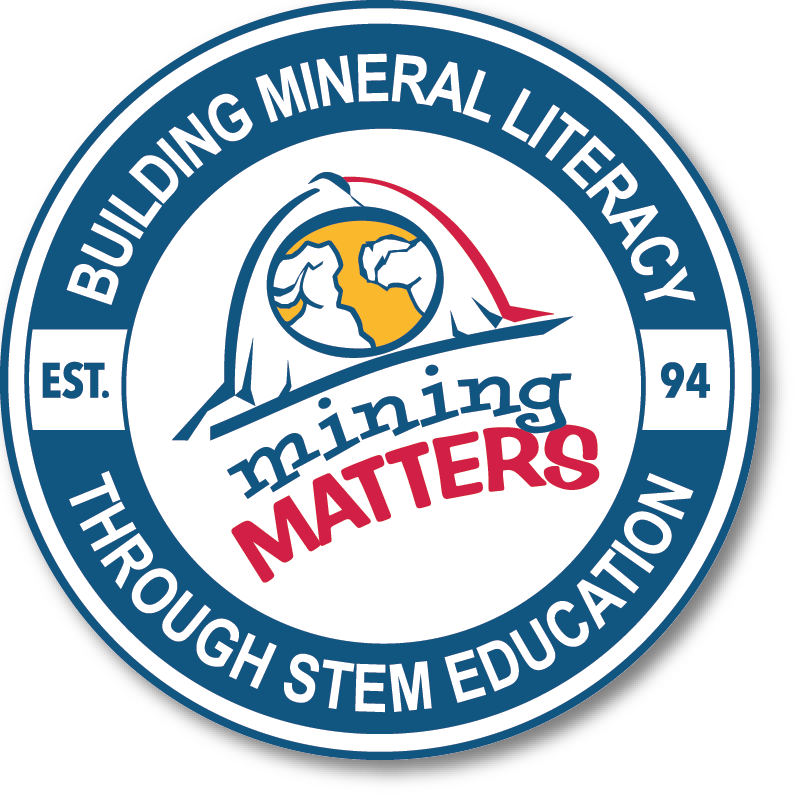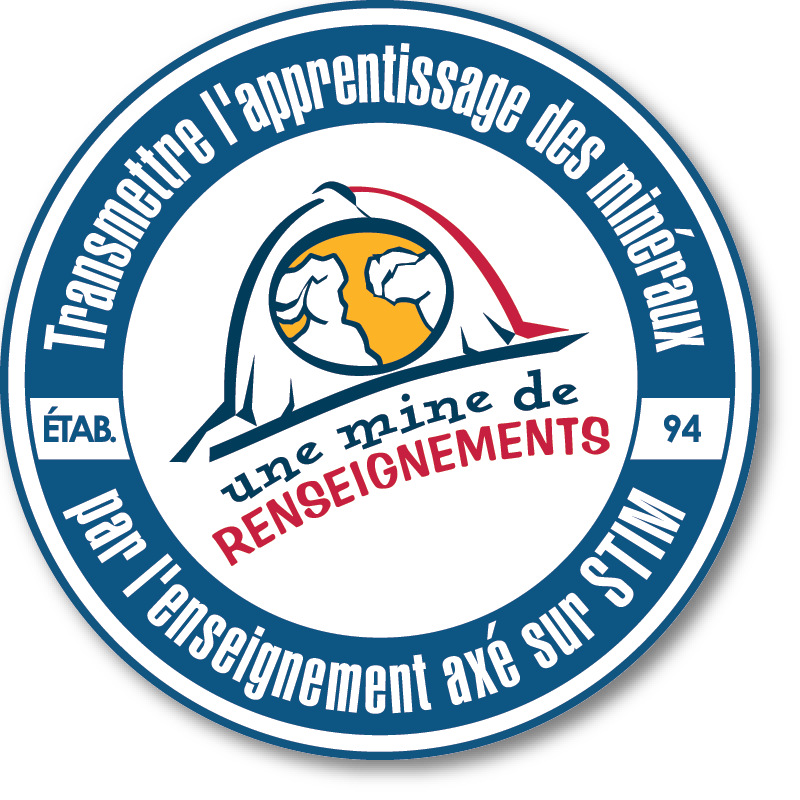Conveyor Belt Challenge
Safety
- Adult supervision is required
- Utility knives are sharp
- Hot glue and the tips of the glue guns can cause blisters and light burns on skin
- A saw can cause small cuts if used recklessly or improperly (although any cuts will not be deep)
Background
Throughout the history of mining some of the most crucial developments have had nothing to do with ores, minerals or digging – rather they were connected to the support systems for the mines. For example, the earliest steam engines were developed as a means to pump water out of coal mines, and some of the first railroad lines ever developed were inside of mines, designed to remove ores and dross from the mine heads. This began with horse drawn wagons and carts that ran along rails laid down inside the mine tunnels beginning in the early 17th century – eventually the horses were replaced by combinations of steam engines and wire cables to winch the carts through the mines
Today ores and materials are often moved by large conveyor belts – the longest in the world (and also the second longest) are found between the Boddington Bauxite Mine in Western Australia and the Worsley Alumina refinery – on the other side of the Darling Ranges - with a 31-km-long belt feeding a 20-km long belt.
Conveyor belts operate using a relatively simple system – the belt is shaped as a loop, pulled at one end by a powered roller or pulley. An engine (or some other mechanism) is used to turn the pulley, which pulls the belt. The belt’s motion is supported by other
free-wheeling rollers or bearings that can keep the belt from sagging over large distances and keep frictional effects low.
The entire system requires a support structure to keep the belt tight and the rollers in place. When operating, these systems can perform for 24 hours a day and have proven to be a huge labour saving device. Today most of the focus on their application is on how to make them more energy efficient for transporting bulk materials.
Conveyor belts and systems are used frequently when we need to move materials, objects and people over distance – they are used everywhere from Amazon distribution warehouses to airports.
There are a few crucial concepts you need to understand:
- The belts move because they are being pushed (or pulled) by a powered roller.
- The belt follows a loop – driven by one roller, it loops past another that acts like a pulley.
- The belt and rollers need a structure to support them. This keeps the belt tight, and allows for the rollers to turn freely
Objectives
You are challenged to creatively solve the problem of moving “ore” 30 cm with a conveyor belt. Using engineering design, you will need to think about the requirements you need to satisfy, devise strategies, create preliminary designs, and experiment with your prototypes.
Materials
Suggested Building Materials
- Bamboo skewers
- Utility baking or roasting pan (large)
- String/butcher twine
- Toothpicks
- Mini balls (plastic golf balls or min-hockey balls)
- Small cups
- Paper towel or toilet paper tubes
- Roll Kraft paper
- Rubber bands pack
- Binder clips
- Wood clothespins
- Duct tape
- Paint rollers
- Packing tape
- Double sided tape
- Wooden dowels
- Shelf paper/liner
- Cardboard boxes
- Etc.
Suggested Equipment
- Stapler
- Mini glue gun
- Small wire cutters/pliers
- Utility knife
- Measuring tape
- Metal ruler/straight edge
- Cutting mat or cutting surface (scrap cardboard works well)
- Saw
- Scissors
- Etc.
Suggested “Ore”
- Toy blocks
- Gravel
- Individually wrapped candies
- Nuts and bolts
Space Requirements
- Lots of work space – you will require room for construction and testing, you may also need this space for a long period of time
- A designated cutting area for the use of the handsaw/utility knives (adult supervision is required)
- Set up a centralized “supply depot” for materials
- Make sure that there are electrical outlets available for a glue gun
Additional Resources
- Engineering - Conveyor Belt Design Lesson plan
- Cardboard conveyor belt DIY video
Instructions
This is an engineering and construction challenge – you will be using tools, problem solving skills, and design thinking. You will make mistakes, and should expect that to need to go through 2-3 iterations (at least) before finding success. Making mistakes is important in this process, and you will need to observe and problem solve as you move through your designs.
Design and ideation phase
Begin by sketching out your idea for how your system should work, this is your “Design Proposal”. You can do this on the worksheet provided or use paper/notebook to create your own ‘Scientific Lab Book’ to record your engineering process. Have a look at the materials you have to work with but don’t start building until you have completed your “Design Proposal”.
Your “Design Proposal” should include some form of sketch or drawing, a list of potential materials, and a list of the steps the you intend to follow to build your solution. Remember, you need to test your ideas throughout the building process, try to identify at which points you will test your concepts.
Build and Prototype Phase
This is the phase that will take the most time, it is recommended that you start on a smaller scale to test ideas. This is best done in steps testing each portion as you go. For example, test that the rollers can turn before adding the belt, does the belt/roller combination move by hand before trying with “ore”.
Here are a few key elements that you will need in your prototype:
- You will need a support structure that is rigid, cardboard boxes or roasting pans can be used for this
- The rollers need to be free to turn and attached to axles that are supported by the structure – dowels and bamboo skewers make good axles, but they need to be attached to the rollers (glue is your friend)
- The axles need to be attached to the middle of the roller, so make sure you think carefully about how they attach it (consider some sort of end piece or “plug”)
- Long belts may need support rollers (or balls) to prevent sag but still allow movement
- Belts need to be tight as possible – the rollers pull the belt by friction, so the tighter the contact, the better
Presentation Phase
Record your conveyor belt in action and share it on Instagram #conveyorbeltchallenge! Even if your conveyor belt doesn’t work as expected, we would love to see your creativity and how you utilized the engineering process. Remember that all designs fail at certain stages, and that this failure is the root of learning. Ready for more? Check out the Extensions section
Extensions
For an extra challenge you can try moving the “ore” uphill, moving it over a larger distance, around a corner, or over a gap between two chairs.




